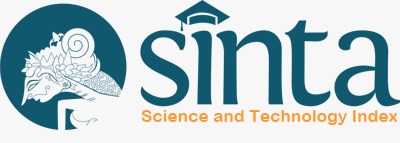Perbandingan Metode Single Exponential Smoothing dan Metode Holt untuk Prediksi Kasus COVID-19 di Indonesia
DOI:
https://doi.org/10.31937/ti.v12i2.1689Abstract
Coronavirus disease (COVID-19) was first discovered in December 2019 in Wuhan, China, and spread so quickly into a pandemic. This outbreak has spread to 24 other countries, including Indonesia. Its spread is very fast, so a co-19 prediction study is needed to be able to make the right policy. To be able to predict the number of COVID-19 cases can be done with the Forecasting Technique. The purpose of this study is to forecast and compare Single Exponential Smoothing and Double Exponential Smoothing ¬ against the number of COVID-19 cases in Indonesia. The results of this study can be used as consideration for policymaking in dealing with the spread of COVID-19. Distribution predictions are based on data released by the Indonesian National Disaster Management Agency (BNPB) in the first 100 days of COVID-19 deployment. The results of this study are the Double Exponential Smoothing method is more accurate than the Single Exponential Smoothing method because the forecasting results show an increase from the previous data. And the percentage of errors (MAPE) obtained is significantly smaller.
Downloads
Downloads
Published
How to Cite
Issue
Section
License
Authors retain copyright and grant the journal right of first publication with the work simultaneously licensed under a Creative Commons Attribution-ShareAlike International License (CC-BY-SA 4.0) that allows others to share the work with an acknowledgement of the work's authorship and initial publication in this journal.
Authors are able to enter into separate, additional contractual arrangements for the non-exclusive distribution of the journal's published version of the work (e.g., post it to an institutional repository or publish it in a book), with an acknowledgement of its initial publication in this journal.
Copyright without Restrictions
The journal allows the author(s) to hold the copyright without restrictions and will retain publishing rights without restrictions.
The submitted papers are assumed to contain no proprietary material unprotected by patent or patent application; responsibility for technical content and for protection of proprietary material rests solely with the author(s) and their organizations and is not the responsibility of the ULTIMATICS or its Editorial Staff. The main (first/corresponding) author is responsible for ensuring that the article has been seen and approved by all the other authors. It is the responsibility of the author to obtain all necessary copyright release permissions for the use of any copyrighted materials in the manuscript prior to the submission.















